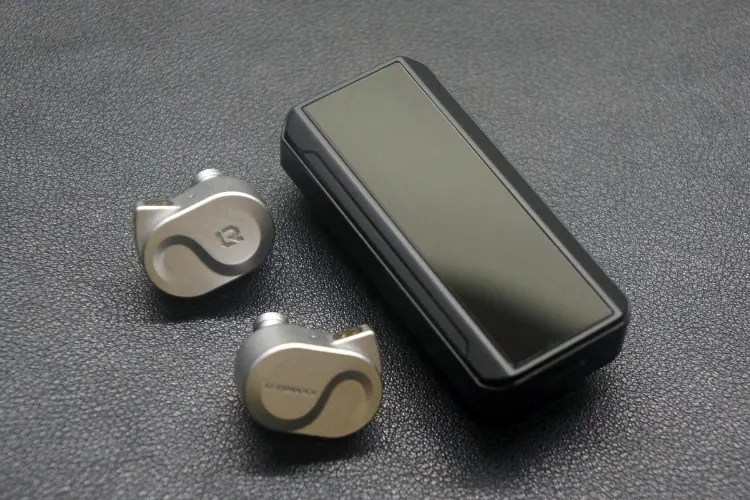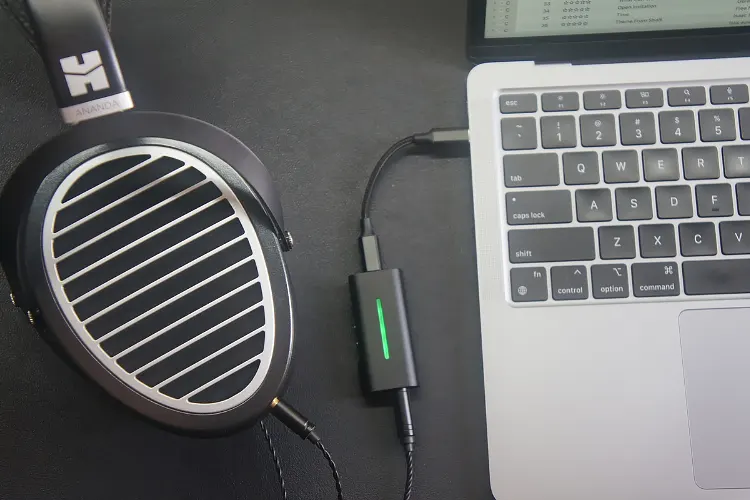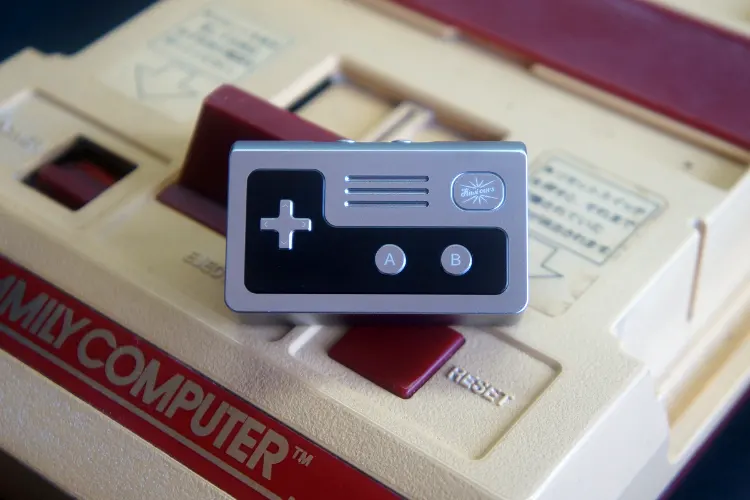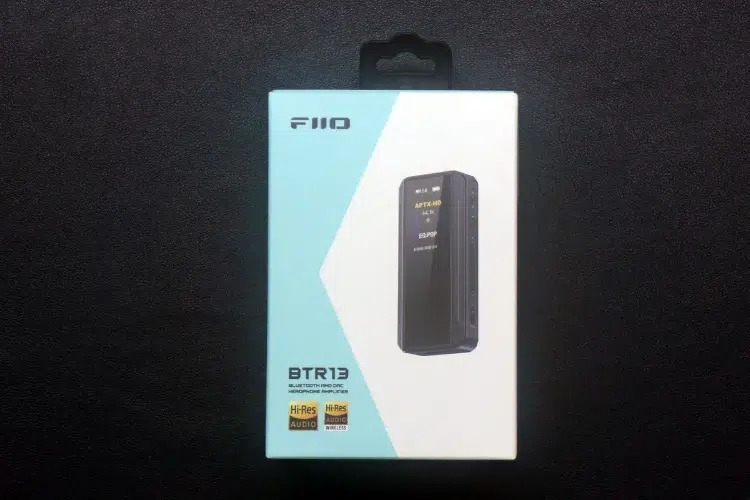Synergy
Power
The BTR13 can deliver very solid power output given its size, delivering 220mW into 32Ω via the 4.4mm balanced output and 100mW into 32Ω through the 3.5mm single-ended output.
Even though it’s a single-ended output, I found the BTR13 capable of driving less efficient IEMs such as the Moondrop Blessing 3 and Yanyin Canon II.
On high gain, I was able to reach a comfortable listening volume on the Blessing 3 at just 38%. On its balanced output, I left the BTR13 at just 24% volume.
With its relatively high 220mW balanced output, I was excited to try the BTR13 with my Sennheiser HD 580 Precision. However, on its balanced output, I found that the HD 580’s dynamics and detail retrieval took a significant hit.
I could reach a comfortable listening volume at just 35% volume, but instruments in the treble region started to sound distorted, and instruments in the sub-bass lacked the punch I was accustomed to.
With its low signal-to-noise ratio, the BTR13 is suitable for sensitive IEMs. Unlike other DAC/AMPs, such as the VE Megatron, I did not encounter any hissing when connecting IEMs to the 4.4mm and 3.5mm outputs.
Pairings
I found that the BTR13 pairs best with neutral-sounding IEMs that can compensate for its recessed mid-range presentation and sub-par instrument separation performance via Bluetooth.
Amongst all the IEMs I’ve tried; I preferred the Moondrop Blessing 3 pairing. The Yanyin Canon II’s more V-shaped sound signature did not synergize with the BTR13 for my taste.
I found the additional emphasis on the bass and treble region drowned out the mid-range too much, making vocals and string instruments difficult to listen to.
The LETSHUOER S08 also paired decently well with the BTR13, its gentler U-shaped sound signature did not drown out the mid-range to the same intensity as the Yanyin Canon II, and the additional treble energy brought by the BTR13 gave the S08 a more exciting sound.
Select Comparisons
7Hz Artemis39
Technical
The BTR13 uses dual Cirrus Logic CS43131 chips, while the Artemis39 uses an ES9039Q2M DAC. The Artemis39 supports up to PCM 32-bit/384kHz and DSD25, while the BTR13 handles up to PCM 16-bit/96kHz.
Both devices support Bluetooth with identical codec options but differ in physical connections. The BTR13 has a single USB-C for data and charging, while the Artemis39 offers separate ports for each.
Both provide 3.5mm SE and 4.4mm BAL outputs, with the BTR13 outputting up to 220mW at 32Ω (balanced) and 120mW (SE) and the Artemis39 offering more power: 405mW (BAL) and 320mW (SE).
Design
Both devices share a similar monolithic rectangular design with I/O ports on the top and bottom, and controls along the sides. However, the Artemis39 is significantly larger in every dimension, making it less portable and considerably heavier than the more compact BTR13.
In terms of build quality, the Artemis39 features an anodized metal frame with glass panels on both sides, giving it a premium feel.
The BTR13 has a plastic housing with a front crystal and a 0.96-inch IPS LCD screen with a plastic clip that allows users to attach it to a bag strap, belt, or shirt.
The inclusion of a screen with a user interface on the BTR13 makes it much more practical and user-friendly, offering better accessibility than the more expensive Artemis39.
Performance
The BTR13 has a warmer sound presentation but lacks the detail and texture retrieval offered by the Artemis39. While the Artemis39 delivers nuanced texture between different drum strikes, the BTR13’s drum hits feel one-dimensional and lack the same texture.
Its warmer sound signature does give male vocals more body and a lusher quality, but this comes at the expense of detail retrieval and instrument separation.
In complex arrangements, especially with string instruments, the BTR13 tends to blur these tones into a more uniform sound, whereas the Artemis39 effortlessly distinguishes between different layers, making each instrument easily identifiable.
The treble on the BTR13 also feels somewhat veiled, lacking the clarity and sparkle of the Artemis39. Cymbals and snare hits on the Artemis39 benefit from better resolution and a more defined decay, giving the high frequencies a cleaner, more refined presentation.
The BTR13 can become fatiguing in the treble range, particularly with its emphasis on snares and hi-hats, while the Artemis39 maintains a more balanced approach that avoids harshness.
LETSHUOER DT03
Technical
The DT03 uses dual Sabre ES9219C DAC chips, supporting PCM up to 32-bit/384kHz and DSD256, whereas the BTR13 maxes out at PCM 16-bit/96kHz.
Both feature USB-C for data/charging, with the BTR13 additionally supporting Bluetooth. In terms of output, the DT03 offers 195mW (BAL) and 78mW (SE), while the BTR13 has slightly more power: 240mW (BAL) and 120mW (SE).
Design
The DT03 features a slightly more compact, curved anodized shell, giving it a denser and more premium feeling build than the FiiO BTR13, which has a more rectangular build constructed out of plastic.
While the BTR13 is slightly bulkier due to its additional Bluetooth functionality, it remains easy to handle. The DT03’s smaller design also incorporates basic volume controls on the body, making it convenient for on-the-go adjustments.
Both dongles are similar in size and equally pocketable and portable. The BTR13 has a slight edge because of its wireless connectivity and integrated clip, but both dongles should be convenient enough for on-the-go use.
Performance
These two dongle DACs have very similar tuning styles, opting for a more V-shaped presentation with emphasis on both ends of the frequency response.
Sub-bass notes on the BTR13 had punch and slam. However, the same bass hits exhibited better texture when played back through the DT03. Instruments in the mid-bass such as bass guitars were better detailed on the DT03.
Both have a lean-sounding mid-range, however, the more powerful BTR13 had better instrument separation and detail retrieval.
Neither dongle presented mid-range instruments with good dynamics, but the BTR13 beat out the DT03 in its ability to place each instrument within the soundscape.
The DT03 has a less energetic and airy set of highs compared to the BTR13, which has a more fatiguing treble that did exhibit sibilance during complex mixes of multiple cymbals and chimes.
Kiwi Ears Allegro
Technical
The Allegro uses a Sabre ES9028Q2M DAC, handling PCM up to 32-bit/384kHz and DSD256, while the BTR13’s dual CS43131 DAC chipset is limited to PCM 16-bit/96kHz.
Both have USB-C input, 3.5mm SE, and 4.4mm BAL outputs, with the Allegro reaching up to 155mW (BAL) and 70mW (SE) compared to the BTR13’s higher output of 220mW (BAL) and 100mW (SE).
Design
The Allegro has a unique metal body inspired by a classic video game controller, while the BTR13 has a simpler plastic design with a front screen. The BTR13’s smaller size and Bluetooth make it more portable.
Performance
Both dongles have a warm mid-bass presentation, giving basslines and lower frequency synths lush, atmospheric tonality that envelops the whole mix.
However, the BTR13 adds to this by having a deeper sub-bass presentation with an impressive punch and slam.
In both dongles, the warm mid-bass bleeds into the mid-range, however, the BTR13 can preserve more mid-range detail with better instrument separation and dynamics when compared to the Kiwi Ears Allegro.
The Allegro treble sounds slightly veiled and muffled whereas BTR13 is more resolving on the top end, with cymbals and snare hits exhibiting more shine and articulated decay. Both dongles exhibit some sibilance, but the Allegro does so to a higher degree.
My Verdict
The sub-$100 BTR13 is a feature-rich Bluetooth DAC/AMP with substantial power for its price, offering options like Parametric EQ, an app, and mic passthrough.
While not on par with pricier DAC/AMPs like the Artemis39 for driving power, its wired/wireless capabilities make it ideal for beginner audiophiles looking for versatility across devices.
FiiO BTR13 Technical Specifications
- DAC Chip: Dual CS43131 DAC
- Output(s): 3.5mm Single Ended and 4.4mm Balanced
- THD+N <0.0018%
- Output Power: 100mW @32 Ohms (SE) and 220mW@32 Ohms (BAL)






